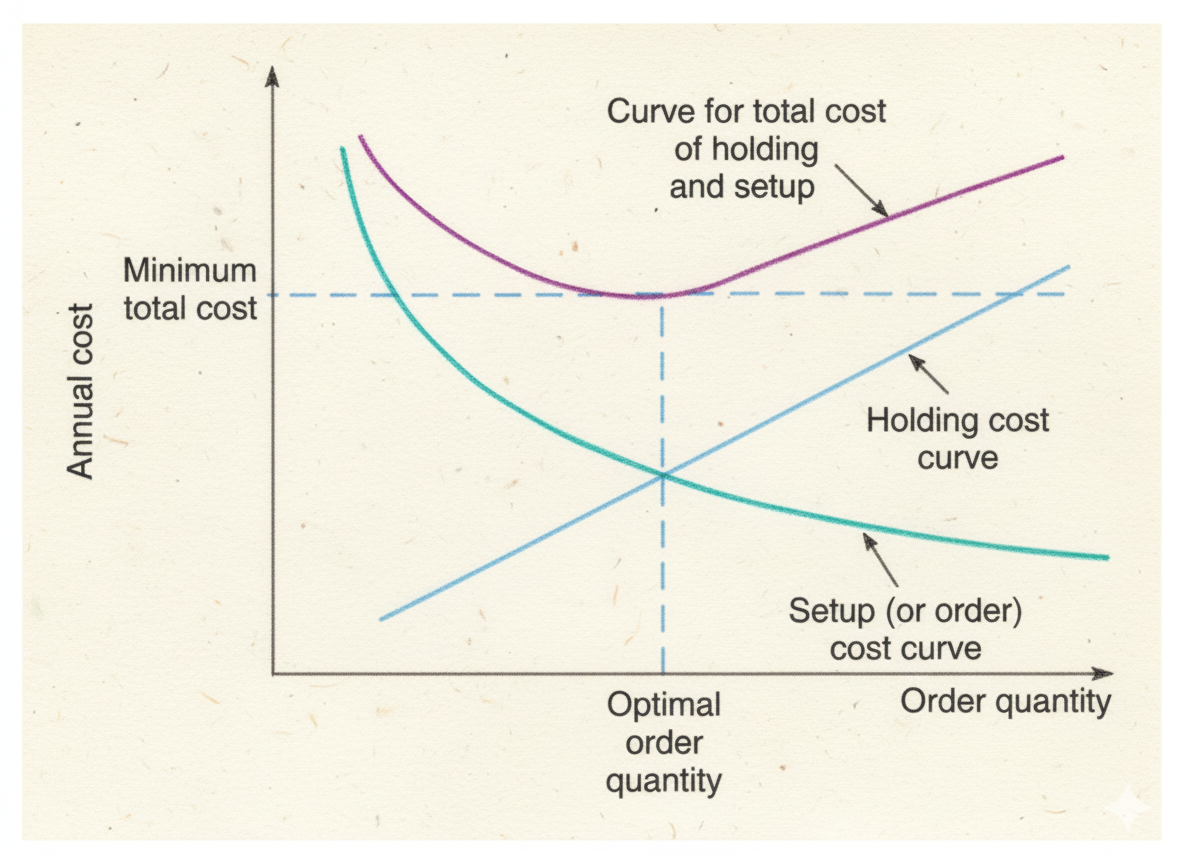Reducing Inventory Costs with Ecommerce-Driven EOQ Strategies
Steel suppliers can reduce customers’ inventory costs by implementing ecommerce solutions that lower ordering costs, enabling more frequent purchases and just-in-time inventory management. This approach minimizes holding costs and total inventory expenses, as illustrated by the Economic Order Quantity (EOQ) model.

CJ Quehl

Ecommerce is a Win–Win for Customer and Supplier
When a supplier provides an ecommerce offering, the customer (i.e., buyer at a metal shop, fabricator) gains a host of tangible and strategic benefits. Alongside time savings and greater visibility, one benefit sometimes overlooked are reductions in procurement and holding costs for their buyers.
Steel suppliers can help customers reduce costs and operate more efficiently by implementing ecommerce solutions that lower the expense of placing orders. This approach enables customers to order more frequently, supporting just-in-time inventory management, and reducing inventory holding costs. In this article, I will dig in a bit more to show you how to leverage ecommerce and support your customers' business strategies by being a partner in their growth by offering ecommerce.
A lower ordering cost means customers can order more frequently for just-in-time inventory control, which reduces the holding cost of the inventory because customers can store a smaller quantity of stock on hand and replenish it more frequently.
Total Annual Cost of Inventory Formula
What we want to evaluate is the economic order quantity (EOQ) for a specific stock item. The total annual cost of inventory (TC) is the total demand (D) divided by the average order size (Q) times the cost to order (S), and we add that to half the order quantity (Q) times the holding cost (H). See the equation below.
The order quantity is divided by two because half the time it will be above the median level, and half the time it will be below. We take this average quantity on hand and multiply it by the holding cost. The holding cost represents the fixed costs allocated to the material in an activity-based costing method, including square feet of storage for the building and energy. It also represents opportunity cost, as capital is tied up in material and could otherwise be invested.
Ordering and Setup Costs
So where does ecommerce come in, and how does that save on the ordering cost? The ordering cost includes factors like the cost of capital to place the order and any setup cost to place the order. Suppliers can’t control how their clients finance the purchase, but they can reduce the setup cost.
The setup cost is primarily an opportunity cost for both the supplier and the purchaser. It is the time it takes employees to place the order, which traditionally involves many manual processes, such as manually checking price lists, calling to build a cart, and going back and forth between the customer and supplier. This time-intensive process incurs opportunity costs of what those employees could have been doing to generate value, as well as the salaries. For the customer this is doubly expensive, as suppliers must pass their costs on to the customer.
Through ecommerce, the time required to produce an order is significantly reduced. This is achieved by empowering purchasing through a clean interface that enables users to find and build a cart quickly, while being enhanced with tools like AI-assisted cart building.
The lower the cost to order, the more frequently clients can order, reducing their holding cost and lowering the total annual cost of inventory.
*In this example, we hold lead time and price constant to focus on the relationship between ordering cost and holding cost and their effect on the total cost of holding and ordering inventory.

Conclusion
By leveraging e-commerce solutions, steel suppliers can significantly reduce the ordering cost component of total inventory cost, enabling customers to adopt more frequent ordering strategies. This shift not only supports just-in-time inventory practices but also minimizes holding costs and overall capital tied up in stock. Ultimately, streamlined digital ordering creates a mutually beneficial scenario where customers gain efficiency and cost savings, while suppliers strengthen relationships and drive long-term value.
CJ Quehl

Related Posts
Ready to take your sales to the next level?
Transform how you buy, sell, and grow with a platform built to drive connections and streamline every stage from quote to cash.









